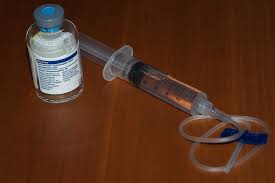Abstract
We studied the human T-lymphotropic retrovirus type III/lymphadenopathy-associated virus (HTLV-III/LAV) antibody status of 234 factor VIII concentrate recipients, 36 factor IX concentrate recipients, 69 long-term recipients of frozen packed red blood cells, and 47 persons not receiving routine transfusion therapy. Factor VIII concentrate recipients had a significantly higher rate of seropositivity (74%) than any other group. Factor IX concentrate recipients had a significantly higher rate (39%) than recipients of frozen packed red blood cells (4%) or nontransfused persons (4%). In factor VIII concentrate recipients, HTLV-III/LAV seropositivity was significantly associated with more severe hemophilia, greater factor dosage, elevated immunoglobulin and immune complex levels, lower T-helper lymphocyte numbers, and lower ratios of T-helper to T-suppressor lymphocytes. For factor IX concentrate recipients, seropositivity was associated with more severe hemophilia. Antibody-positive factor IX concentrate recipients had a lower rate of seropositivity to HTLV-III/LAV p41 membrane antigen than did antibody-positive factor VIII concentrate recipients, but factor VIII and factor IX concentrate recipients had similar rates of seropositivity to core antigens. We conclude that both factor VIII and factor IX concentrates may transmit HTLV-III/LAV. For factor VIII recipients, HTLV-III/LAV seropositivity is associated with altered immune test results.
Jason J, McDougal JS, Holman RC, Stein SF, Lawrence DN, Nicholson JK, Dixon G, Doxey M, Evatt BL
JAMA 1985 Jun;253(23):3409-15
PMID: 2987559
Jason-JAMA-1985-253-Blood-component-hemophilia-HIV